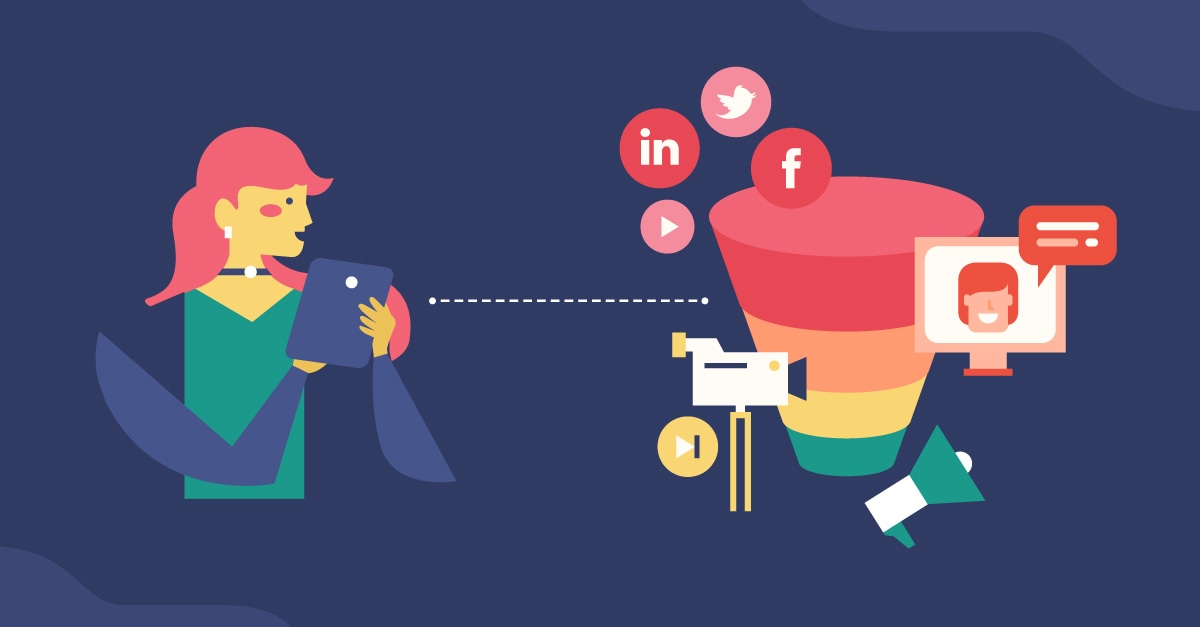
Each social media post, every blog post, and every one of your landing pages needs to have a purpose and strategy. No matter what your goal is—product demo sign-ups, ebooks downloaded, discount used, or a variety of other conversions—each step of the process needs to be clearly defined so leads can find their way to the eventual endgame.
The first step, before you can expect any sort of action from your leads and customers, is to know your audience. Only when you understand them can you begin to lead them through their customer journey with your company. Then, when you know your personas and what your different audiences need, you can decide which action would be most beneficial for them in order to proceed. Finally, it’s up to you to make it as easy—and tempting—as possible for people to convert.

Know Your Customers
It’s imperative for companies to create personas. These are an especially important part of a marketer’s toolbox: A persona is a “representation of a user, typically based off user research and incorporating user goals, needs, and interests.”
Your goal is to have a long-term relationship with your customers, but it’s close to impossible to know each individual intimately. Personas help segment your customers into groups of like-minded individuals who will respond similarly to a specific kind of messaging. With them you can have more personalized conversations with an audience.
According to UX Booth, high-quality personas:
● Reflect patterns observed in research
● Focus on the current state, not the future
● Are realistic, not idealized
● Describe a challenging (but not impossible) design target
● Help you understand users’:
- Context
- Behaviors
- Attitudes
- Needs
- Challenges/pain points
- Goals and motivations
Create personas with data from your customer relationship management (CRM) platform and input from those who speak directly with your customers, including your sales and customer service reps. Once you have your customers (and leads) defined and you understand them, you can figure out how your company can help them.
Decide How to Help Them
Your first introduction to people who have never heard of your company may be over social media. In this case, it’s important to guide them into your funnel. Your goal at this stage is to lay the foundation for your relationship with them, so they’ll respond well to helpful content with no sales slant. Using your personas, educate them and prove you’re there to help by using content tailor-made to their needs and questions.
Continue to use your personas as your guide as you decide how to reach out to leads and customers in your funnel. For example, if a lead is at a certain point in their customer journey, would they be better served with a YouTube video explaining how to use your product, or with an invitation to visit one of your reps in person to get an in-person demonstration? Does one persona want the ability to learn about your services through white papers, while another prefers to call and talk to a sales rep—with no pressure to close a sale?
Find out what your company can provide that will help leads and customers proceed to their respective next steps. Then ensure it’s easy for them to do just that.
Facilitate the Next Step
When someone nearing the bottom of the funnel is ready to see a demo, you must strike while the iron is hot. That lead needs to be able to express interest and arrange a time for the demo without complicated forms, multiple points of contact, and a long waiting period. Take too long and you risk losing the lead to reduced interest (or your competition).
Specific campaigns need individualized landing pages. Your website must be user-friendly and easy to navigate. Blog posts should have appropriate, singular calls to action related to the subject covered in the post.
No matter what action you take online (or offline) to communicate with your customers, your goal should be twofold: strengthen your relationship with the recipients, and help them in their journey with your company. Research and construct your personas, decide how you can best help them in each part of the customer journey, and then make it easy for them to move forward—and eventually finalize the sale.
Do it all faster and more accurately with Salesforce Marketing Cloud. See an overview of our powerful marketing automation and management platform by following the link below.
Share "Cause and Effect: How to Lead Your Customers Through Your Funnel" On Your Site




